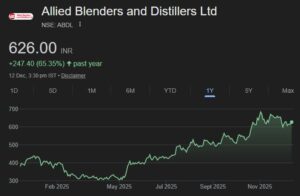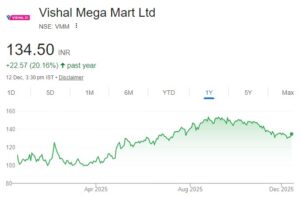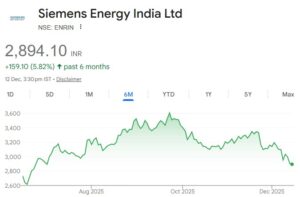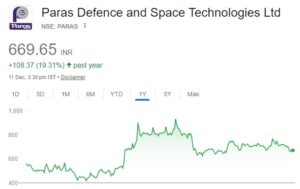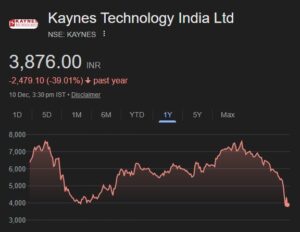

Warren Buffett, in a timeless advice that he gave several years ago, said that investors had to focus on the business of the stock that they were buying instead of worrying about macro issues like inflation/ deflation, currency appreciation/ depreciation, interest rates etc. Warren Buffett said that if you were right about the business, nothing else mattered.
To prove his point, Warren Buffett cited the example of Coca Cola which, after its IPO in 1919, faced multiple hurdles like the great depression, sugar shortage, farmers rebellion, inflation, deflation and even a World War! Yet, if you had bought one share and held on it and reinvested the dividends, it would be worth $5 Million Warren Buffett said.
So, Nomura’s research into identifying India’s 10 most competitive companies has a lot of sense and deserves to be taken note of.
Nomura’s research methodology to identify the top 10 companies with strong competitive strength is simple but effective. It carried out a detailed analysis of the sources of competitive strength across sectors and took an in-depth look at management capabilities. Nomura also minimised subjective and personal bias by combining quantitative and historical analysis to rank companies based on competitive strength.
Nomura has proceeded on the philosophy that only the strongest companies truly prosper and that competitive strength usually translates into above-average returns and long-term multibagger share price prices.
Amara Raja Batteries scores high because it has a strong technology partner (Johnson Controls), growing brand awareness and cost advantage. Amara Raja Batteries has gained significant market share across all segments thanks to its technological innovation, superior product quality, strong brand building efforts, and expansion of distribution networks. Amara Raja Batteries is expected to continue to deliver consistent earnings growth over the next five years as industry conditions remain favourable.
Amara Raja Batteries has re-rated significantly over the past two years on strong earnings and market share gains delivered across all segments. Its’ current valuation (on 1-yr fwd P/E) is at a 13 per cent discount to EXIDE. As Amara Raja increases its scale of operations and continues to deliver strong and consistent earnings growth, it should trade in line with EXIDE.
2) Cummins India
Cummins India is a solid long-term fundamentals story. It has delivered a solid PAT CAGR of 22 per cent and 20 per cent over the past 10 and five years, respectively. Cummins India remains a fundamentally strong business with a solid long-term opportunity in power-short India. With strong competitive advantages such as technology leadership in MHP and HHP engines, localized manufacturing, a wide service network and strong management, Cummins India looks poised to grow at a steady rate in the long term.
Cummins India is trading at ~16x one-year forward P/E which captures most of the downside it currently faces from cyclical headwinds. There is limited downside from the current level.
3) ITC
ITC is one of the top five companies to own in India – simply put. Since the turn of the decade, ITC has delivered 32 per cent -plus CAGR vs. the Sensex 21 per cent-plus and HUVR 15 per cent-plus.
The significant alpha generated by ITC amply demonstrates the company’s ability to deliver consistent returns for shareholders despite various changes to tax laws over the past decade or so.
ITC’s one-year forward P/E was 10x in FY03, which is currently at 24.6x FY15F (EPS: INR13.57). This clearly reflects confidence of the market in the company over the past decade. ITC’s multiples are likely to hold at these levels, with earnings growth being the key driver of stock price performance.
4) Nestle India
Nestle India has long term attractiveness which should not be clouded by short term growth challenges.
Nestle’s key drivers will be under-penetrated market categories, market leadership across segments, established brands, strong distribution and a global parent with a large portfolio of brands. Nestle’s performance over the last few quarters has been underwhelming, but that should not concern long-term investors too much.
Over the last decade, Nestle has been an expensive stock, but the reason for that is the potentially attractive long-term opportunity it presents in the packaged food sector. For this, Nestle’s valuation multiples should hold at high levels even within the consumer sector. High multiples are justified for a business with a high RoE and strong growth over the medium term.
5) Asian Paints
Asian Paints’ key growth drivers and sources of competitive advantage are its brands, execution and distribution network.
Asian Paints over the last decade has not only been able to maintain its strong momentum, but has also meaningfully expanded market share vs. both domestic and international players. Its’ efforts in brand building and excellence in execution has meant that the profits have increased at 23 per cent CAGR over FY03-13.
Asian Paints’ expensive valuations will continue to sustain despite the fact that it does go through cycles and is impacted significantly by macro conditions. Valuations are likely to continue to remain high as, over the longer term, Asian Paints has delivered consistent shareholders returns higher than market average.
6) Pidilite Industries
Pidilite is a market leader in a range of categories within the consumer & bazaar segment (C&B) that includes adhesives, sealants, construction chemicals and art materials. Pidilite’s strong brand, solid distribution network, and ability to launch innovative products in niche categories will help it to sustain its competitive advantage.
Pidilite Industries has a strong balance sheet, with net cash and average FCF generation of INR2.3bn over FY09-12. Low capex and a longer product cycle have resulted in high ROCE, which has exceeded 20 per cent over the last 10 years ex FY09 and looks sustainable going forward.
7) Sun Pharmaceuticals
Sun Pharmaceuticals’ key sources of competitive strength are a strong domestic business and balance sheet that allow it to pursue value-accretive inorganic opportunities. In the India formulation space, Sun Pharma has consistently grown ahead of the broader market. Sun Pharma has an unparalleled presence in chronic segments.
8) Lupin
Lupin has a successful track record of execution. In India, there is a complete transformation for Lupin from an anti-TB and anti-infective player to a prominent chronic therapy player. In the US, Lupin has emerged as the largest Indian generic company in terms of volume with higher per product sales.
Lupin trades at 22.6x FY14F and 18.2x FY15F our EPS of Rs 33.5 and Rs 41.5, respectively. Lupin is expected to trade at a premium to the peer group average given the expectation of sustained growth and the possibility of consensus earnings estimate hike.
9) HDFC Bank
HDFC Bank’s has enormous competitive advantage which has helped it deliver 30% plus y-y PAT growth over the past 55 quarters, driving a significant valuation premium over its peers. Brand strength and reach, product diversification and management quality are the overarching sources of its edge.
10) Axis Bank
Axis Bank’s evolution as a fiercely competitive bank across asset and liability franchise has largely been overshadowed by its large corporate exposure. There are several parameters on which Axis has built a sustainable competitive edge.
Despite the risk perceptions, Axis’ delinquency ratio has been the lowest barring HDFC Bank’s. Proactive provisioning policy has ensured a similar rank in NNPL ratios. Axis’ portfolio is well diversified, with below 5 per cent funded exposure to the power sector. With its sustainable edge over quite a few components of profitability (RoA), Axis Bank offers a compelling story given its steep discount to HDFC Bank.
